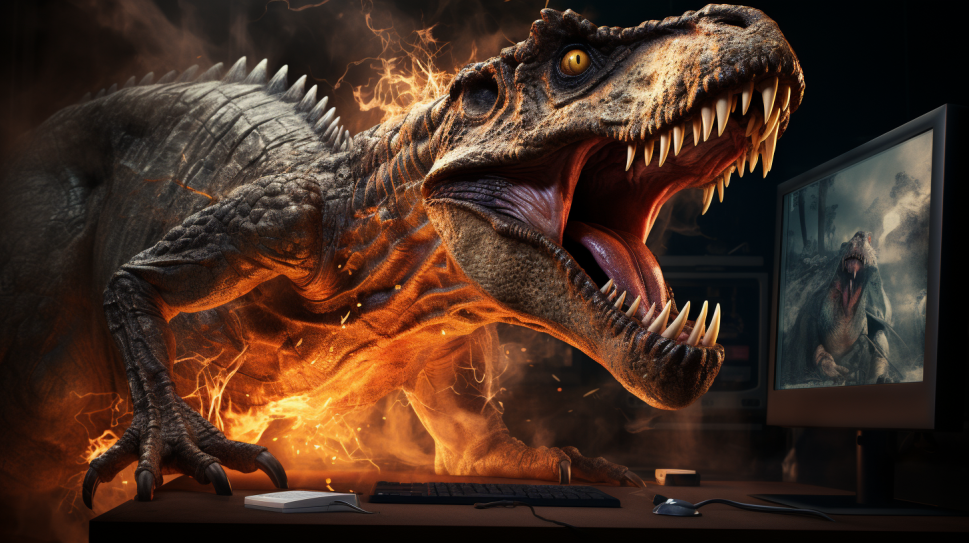In recent years, self-supervised learning has emerged as a powerful technique for training computer vision models without requiring large amounts of labeled data. Models trained using self-supervision can learn rich representations directly from images, circumventing the need for manual image labeling.
DINOv2 now on Huggingface: https://huggingface.co/docs/transformers/main/model_doc/dinov2
Github: https://github.com/facebookresearch/dinov2
Demos: https://dinov2.metademolab.com/
Meta AI has developed a breakthrough self-supervised learning model called DINOv2 that achieves state-of-the-art results matching or exceeding traditional supervised computer vision models. In this article, we’ll provide an introduction to DINOv2, explain how it works, discuss its applications, and provide pointers for getting started.
Overview of DINOv2
DINOv2 is a self-supervised model based on Vision Transformers (ViT) architecture. It was trained on a large dataset of 142 million unlabeled images scraped from the web. DINOv2 shows remarkable performance on image classification, segmentation, retrieval and even specialized tasks like depth estimation without needing any fine-tuning.
Key capabilities and benefits of DINOv2 include:
- State-of-the-art results competitive with supervised models
- No need for labeled data – can learn from any image collection
- No fine-tuning required for many tasks
- Scalable architecture using Vision Transformers
- Training process improvements allow larger datasets & models
- Strong performance on tasks like classification, segmentation, retrieval
- Surprisingly good at niche tasks like depth estimation
DINOv2 represents a major advance in self-supervised computer vision, removing the constraints of labeled data and pretraining objectives tied to datasets. Next, we’ll look at how DINOv2 achieves these results.
How DINOv2 Works
DINOv2 is able to reach high accuracy without labels through an approach called self-supervised learning. In self-supervised learning, a model learns representations of the raw input data through pretext tasks rather than explicit labeling.
For example, DINOv2 was trained to perform image reconstruction and predict image rotations and other transformations. Through these pretext tasks, DINOv2 develops an understanding of images without using any human-provided labels.
Under the hood, DINOv2 uses a Vision Transformer (ViT) as the base model architecture. Transformers have become ubiquitous in natural language processing models, and ViTs extend this approach to computer vision. DINOv2 also employs a student-teacher training framework to improve stability.
To train DINOv2, Meta AI compiled a massive dataset of 142 million images from the web. A rigorous filtering and curation process was used to ensure useful training data. This scaled-up dataset combined with training improvements allowed DINOv2 to surpass previous limits.
Some of the key training innovations include:
- Regularization methods adapted from similarity search literature
- Latest techniques like mixed-precision and distributed training
- Optimized implementations to reduce memory usage and increase speed
These developments unlocked the full potential of self-supervised techniques on larger architectures like DINOv2’s ViT backbone.
Applications of DINOv2
Thanks to its self-supervised approach, DINOv2 delivers excellent performance on a variety of computer vision tasks without task-specific fine-tuning. Some of its capabilities include:
Image Classification
DINOv2 achieves top results on image classification benchmarks like ImageNet, outperforming other self-supervised models. With simple linear classification heads, it reaches accuracy matching or exceeding traditional supervised models.
Depth Estimation
Remarkably, DINOv2 surpasses specialized state-of-the-art models on monocular depth estimation tasks. This demonstrates how self-supervised learning can capture information hard to obtain from manual labels.
Segmentation
Without any fine-tuning, DINOv2 produces competitive segmentation results on datasets like ADE20K and Cityscapes. This makes it highly versatile for segmentation use cases.
Retrieval
DINOv2’s image embeddings can be easily used for semantic image retrieval. Similar images can be found by comparing embedding distances.
DINOv2 delivers excellent performance on these and other vision tasks right off the shelf. The lack of dependence on labeled data for pretraining makes it highly flexible.
Getting Started with DINOv2
Meta AI has open-sourced DINOv2 along with pretrained models and code on GitHub:
The repository contains code examples for using DINOv2 for image classification, nearest neighbor search, and other tasks. Pretrained DINOv2 models are available in different sizes, from 21 MB to 4.2 GB.
| model | # of params | ImageNet k-NN | ImageNet linear | download |
|---|---|---|---|---|
| ViT-S/14 distilled | 21 M | 79.0% | 81.1% | backbone only |
| ViT-B/14 distilled | 86 M | 82.1% | 84.5% | backbone only |
| ViT-L/14 distilled | 300 M | 83.5% | 86.3% | backbone only |
| ViT-g/14 | 1,100 M | 83.5% | 86.5% | backbone only |
conda env create -f conda.yaml conda activate dinov2
We recommend using GPU acceleration for efficient inference. DINOv2 models can provide powerful pre-trained representations for many computer vision applications.
Conclusion
DINOv2 represents a major leap forward in self-supervised learning for computer vision. By training at scale without labels, DINOv2 develops versatile and accurate visual representations. It achieves excellent performance on tasks like classification, segmentation, retrieval, and depth estimation without task-specific fine-tuning.
Meta AI’s work highlights the potential for self-supervised models to surpass supervised pretraining. DINOv2 removes the constraints of human-labeled data and sets a new state-of-the-art for self-supervised computer vision. The open-source release provides pre-trained models for others to build upon this work.
Self-supervised techniques will open new possibilities in areas where labeled data is scarce. DINOv2 shows the way forward to leverage huge unlabeled datasets. We expect models following this approach to continue improving and finding novel applications in the years to come.
